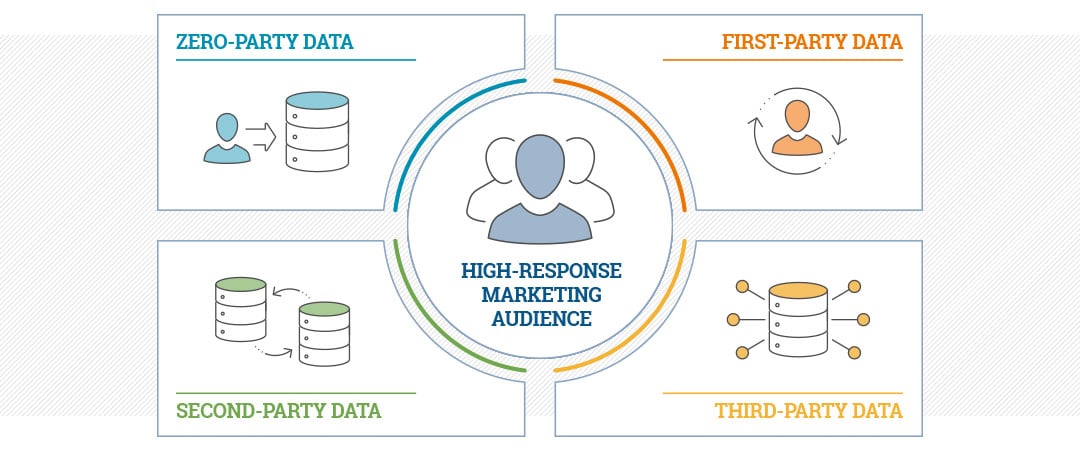Marketing Data Explained – What It Is, Types, and Benefits
You’ve likely heard a lot about zero-, first-, second-, and third-party data. But how are these types of consumer data different, and how do they inform the creation of programmatic advertising audiences that both perform well and are privacy-compliant?

What is Marketing Data
Marketing data refers to the information marketers use to better understand their audience, personalize messaging, and improve campaign results. This data can include demographic, behavioral, transactional, and intent signals gathered from both public and proprietary sources. When used effectively, marketing data helps brands identify high-potential customers, deliver more relevant content, and drive stronger performance across every channel.
Types of Marketing Data
Marketers’ ability to target their advertising to the right people depends on the breadth, depth, and quality of the data they can access. As concerns related to data privacy evolve—in tandem with consumers’ growing expectations for more personalized marketing—advertisers need to understand how the different types of marketing data available to them and their data partners can aid in reaching the right people with the right messages.
Zero-Party Data
Information shared proactively, intentionally, and explicitly with a brand or organization by a consumer.
A distinction originally coined by Forrester, this is data that consumers have voluntarily provided to an entity about themselves, including their interests, communication preferences, needs, and how they want to interact with the brand or organization. It represents an even more direct relationship with consumers than first-party data and is subject to the same privacy and permission stipulations.
First-Party Data
Consumer data, signals, and cookies owned—with permission—by the organization collecting them.
This information results from direct relationships and interactions with consumers. It can include demographics, purchase or donation history, purchase behaviors, in-store interactions, online and mobile activity via websites or applications, email and other promotion engagement, and loyalty program information. This individual-level data is valuable for marketers as it is reliable and highly indicative of future spending behaviors.
Second-Party Data
Data acquired through a trusted partner, often referred to as “someone else’s first-party data.”
Second-party data is essentially the same as first-party data—the difference is in how it’s collected. Second-party data is high-quality data that is collected and analyzed by a trusted partner acting on behalf of multiple participants. It is more valuable than third-party data because it is exclusive and not sold openly on the data market. As a result, second-party data is an excellent tool for enhancing existing first-party data for deeper insights, better predictive analytics, and greater reach by extending targetable audience.
Third-Party Data
Data and information related to consumers that is generally available for licensing to marketers.
These typically large data sets are compiled by an entity that does not have a direct relationship with the consumer and are built from a variety of publicly available sources, analytical models, and the licensing of first- and second-party data. It is often purchased through a demand-side platform (DSP), data management platform (DMP), or other data aggregator or marketplace. As long as it is purchased from a reputable, privacy-compliant source, third-party data is useful for expanding reach and enriching existing data assets.

Benefits of Data Analytics in Marketing – Putting it All Together with Wiland
All four types of marketing data have a place within predictive modeling platforms like those used at Wiland to create high-response marketing audiences for addressable advertising campaigns. The same data sources are also used to create elements found in superior data enhancement products such as MarketSignals™️. As privacy regulation, browser policy, and consumer sentiment evolve, it will be important for digital advertisers to be sure that the data within their own analytical systems and the systems of their audience providers are making the best use of all four data types while maintaining robust privacy compliance.
Tags: data privacy digital advertising digital audiences first-party data second-party data third-party cookies




